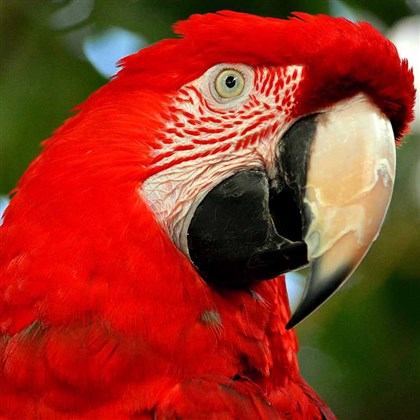
In fact, there are two birds, both members of the crow family, named nutcracker. The Clark’s nutcracker is found throughout the high mountains of western North America; the spotted nutcracker lives in the mountains of Eurasia, including the Himalayas. Both of these birds feed primarily on pine “nuts,” the hard seeds found inside pine cones. Their long, strong bills enable them to extract the seeds from in between the stiff scales of pine cones.
Other avian nutcrackers are the macaws, large members of the parrot family. The birds’ name, macaw, comes from an indigenous South American word for palm nut. Macaws are among the few animals capable of cracking very hard-shelled palm nuts to feed on the high-energy oily nut meats inside. Their formidable nut-cracking ability is thanks to their very tall, stout, hooked beaks and their strong jaw muscles, which enable them to exert a maximum bite force of up to 2,000 pounds per square inch — 10 times that of a human and twice that of a snapping turtle. Only crocodiles can bite as hard as a macaw, but they don’t like nuts.
At this time of year, people often put out bowls of nuts in the shell for holiday gatherings. It is nearly impossible for anybody to crack them with their bare hands or teeth, though, so if we want the nuts to be more than just decoration, we will make sure there is a mechanical nut cracker and nut pick nearby. But, if our guests were large macaws, they could easily help themselves, exerting the bite force needed for cracking even the hardest nutshell, and then using their nimble feet and pointed beak to deftly extract every little bit of nut meat.
No comments:
Post a Comment